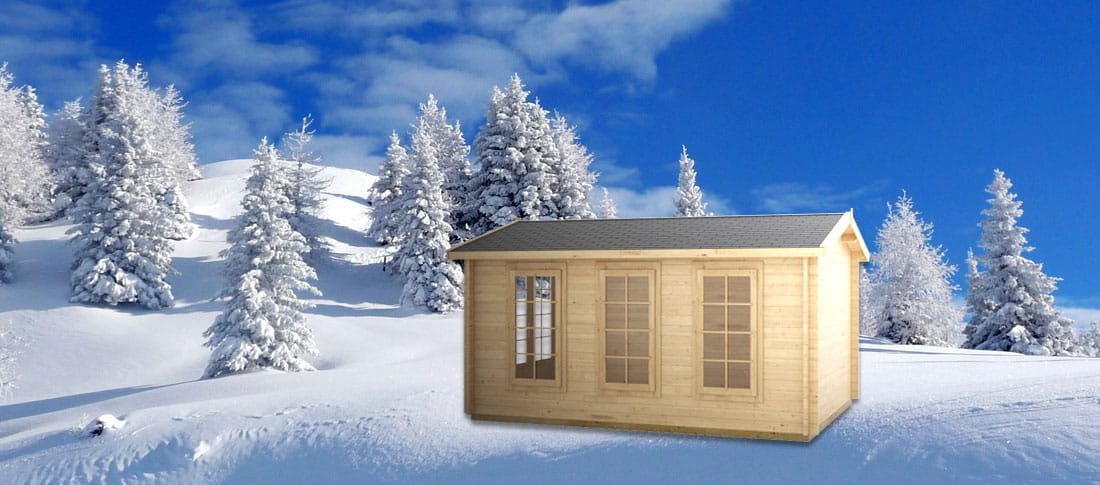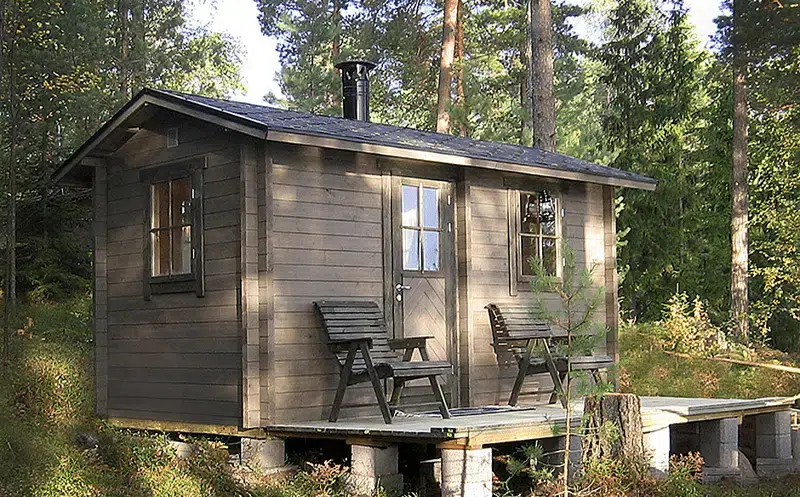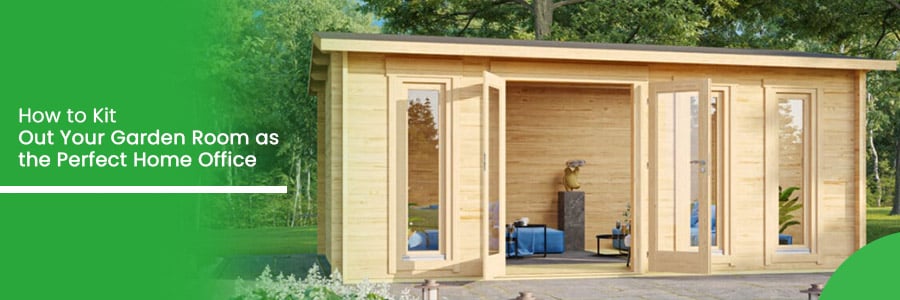Prepare for Winter at the Garden Shed
02.11.2018
For those with orchards or vegetable gardens, the garden shed might be the centre of dealing with the harvest right now. Boiling down fruits and veggies might be less stressful in the garden shed than in the kitchen. A small camping cooker would do, the conserved goods might just be stored in the garden shed if it is heated or at least frost-free during the winter time. Fermentation containers might foster alcoholic fermentation if you decided to conserve grapes or fruits that way, lactic fermentation might be employed to conserve a whole variety of vegetables from beans over kohlrabi to sauerkraut made from cabbage. Indeed, lactic fermentation is one of the gentler conservation methods, preserving vitamins and vital substances, and even adding some vitamins.
Another very preserving storage method is keeping the precious harvest in earthen clamps. You dig a hole in the ground, and you can store all kinds of root vegetables like carrots or radish in the earth, root tubers like turnips, turnip cabbage, or beet root can be stored, and even cabbage heads on their stalks with the outer leaves removed stay under the earth, while not covered with earth like the root vegetables but surrounded by air in the subterranean storage den.
Cover the hole with a board, put 20 or 30 centimetres of earth on it, and the storage facility is operational. To protect from mice, some will also dig in old metal washer drums and store the veggies there.
Don’t forget to prepare for the winter vegetables at the garden shed
With so much harvest related activity at the garden shed, some forget that winter is no longer a time of total rest for gardeners. Once you have experienced the vitality and taste of freshly harvested organic veggies from the garden, why should you do without these during the winter time? As we have mentioned before, cultures like sprouts, bok choy, broad beans, peas, onions and spring onions, lettuce, kale, lambs lettuce, Arugula, Mizuna, or palm kale – to name just a few – could be in full swing now, ready to be harvested in March, April, or even during the winter.
Make sure to have some foil tunnels in the garden shed to give these beds some protection from November onwards.
Winter at the garden shed – thorough preparation avoids losses
What other materials would make sense to have in your garden shed for protection of plants from the cold? How about some rush – or raffia mats, some white tree paint, and a wheel barrow to transport mulch, leaves, or fir branches?
Especially young fruit trees with smooth and thin barks may split during winter when the stem is frozen on one side and the winter sun heats up the other side. To prevent this, these young trees are either shielded from the sun which you could even achieve by simply putting a board at the south side of the trunk or – a little less makeshift – by painting the trunk white in order for it to reflect the sunlight and not get so hot. These paints can be bought or easily made with 10 litres of water, 1,5kg of burnt lime, and half a kilo of wallpaper paste without any additives.
If you think that white painted trunks are not appropriate in your ornamental garden, you might use the before mentioned mats to wrap them all around the trunk, and fix them with a string to protect it from the cold as well as from the sun.
Can you hibernate frost-sensitive plants inside the garden shed?
Depending on the wall thickness of your garden shed, equipping it with an electric frost guard to keep it frost-free and therefore suitable to hibernate frost-sensitive tub plants might be more affordable than you think. Most of the winter it is not even freezing outside and during the rather few really cold nights, the temperature difference that the frost guard would have to stem to keep the inside just above zero degrees centigrade would not be nearly as much as it is to keep a house at a comfortable temperature for living. The difference would be about 18 to 20°C less in the garden shed than in a house, the loss of heat would be much slower, and keeping the temperature therefore would require much less energy.
For most tub plants, light is also a factor. So you should place them behind a window in the garden shed after cutting them back. This way new buds and shoots will slowly be growing deeply green with a minimum of temperature and a maximum of natural light.
Prepare your newly planted perennials for outside hibernation around the garden shed
Getting the wheelbarrow out of the garden shed to move some compost, mulch, or leaves to place them on the root area is a good winter preparation not only for roses. It makes also a lot of sense for newly planted trees, bushes and shrubs. A protective layer of mulch keeps the soil from freezing deeper than the newly grown roots go thus preventing the plant from drying out during extremely cold periods.
Also, plants originating in the Mediterranean, or tropical and subtropical regions like for example paulownia trees, Japonese cedars, chusan palms, lavender, Bluebeards, crocosmias, gladiolas, and cistusses will be grateful for such a protective cover which will decompose during the next spring, and help the plants to thrive and grow.
As fir branches are also welcome for the root area protection, you might take a hint what to do with your old Christmas tree, as the lowest temperatures are usually expected in January and February.
Most tube forming shrubs can stay in the ground, again mulch can never be wrong, only dahlias should be dug out and stored in a box in sand and compost at a cool place, as for example, the frost-free garden shed or in a cool cellar.
Does your garden shed need any protection?
If your garden shed is well-maintained with no water leaking in during rainfalls, it should be OK. Of course, all water-containing tubing has to be emptied, as well as the rain barrel. Garden ponds can only stay if they are deeper than one metre. Water-pumps must be emptied and stored frost-free.
As soon as the leaves have come down you might check the gutters and clean them so that they stay functional during the winter and direct water away from the garden shed.
You might also think about digging in some tubes of crocus and snowdrop around the garden shed to make it a more lovely view during late winter and early spring of next year.
For any questions, please contact us or call Oliver at 020 3807 0369!
Categories:
BlogWant to discuss over phone. Let us call back to you
If you need any additional info regarding any product, please fill in the below form and we will get back to you, usually the same or next working day.
Have any questions regarding some product?
If you need any additional info regarding any product, please send us your questions.




